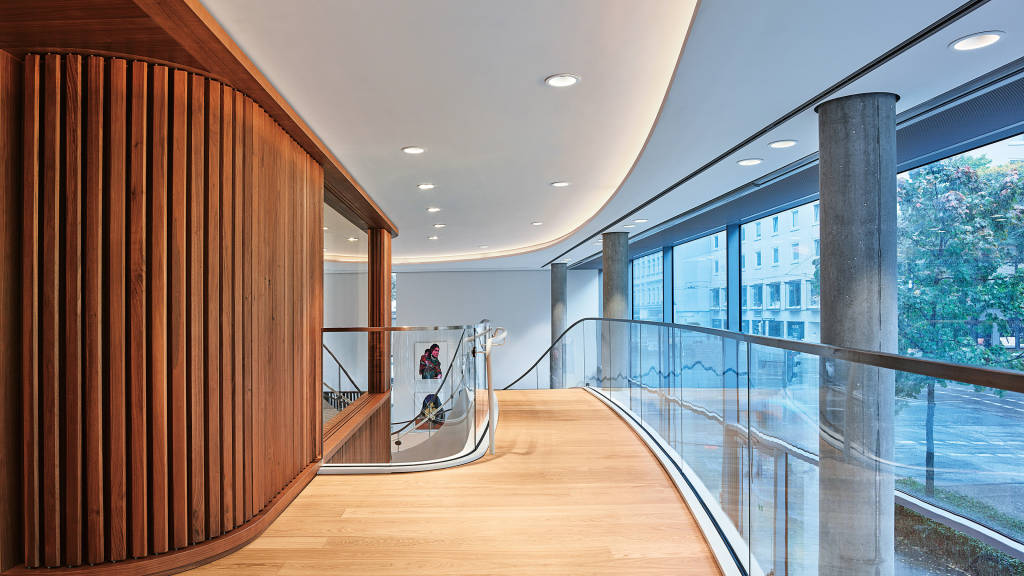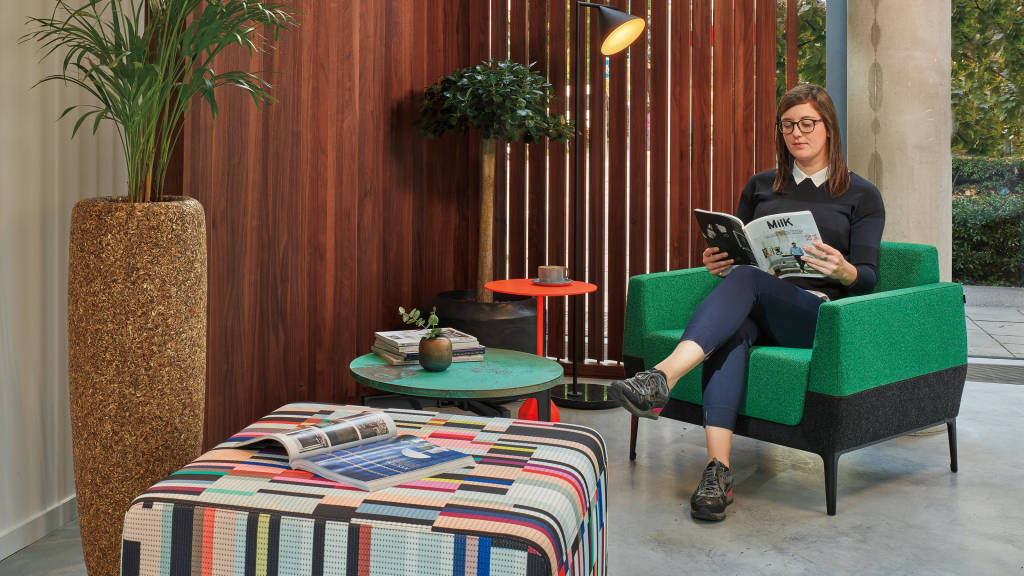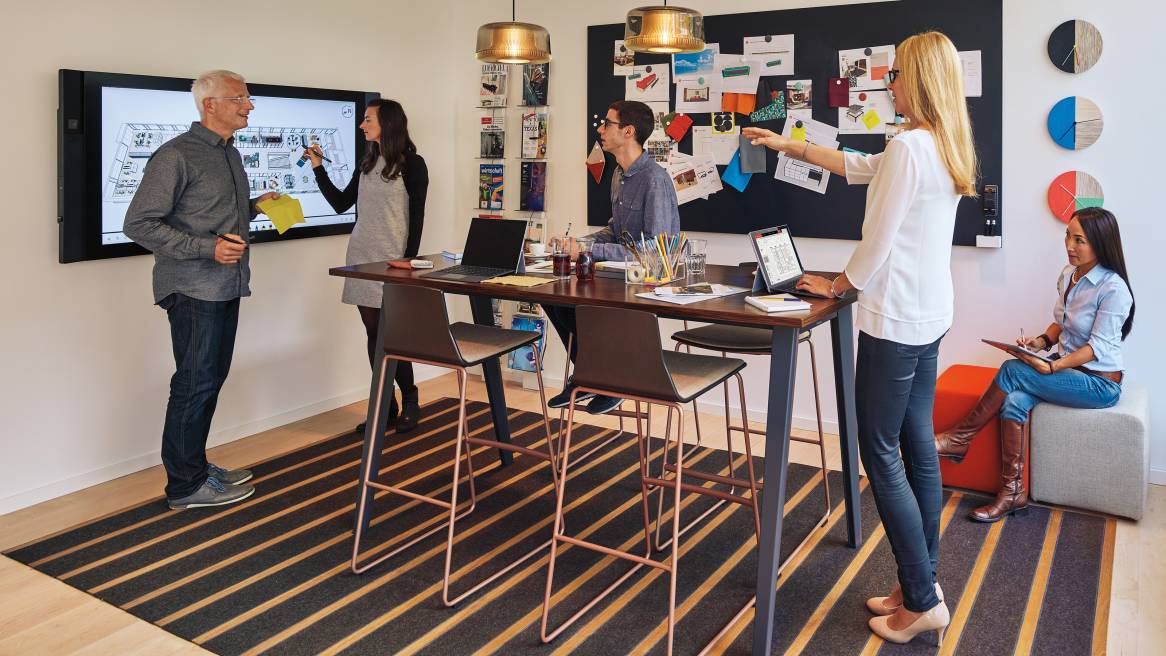Inside Innovation
A Contemporary Model of Leadership
Progressive insights about the role of leaders are key to Steelcase’s evolving culture. Instead of being top decision-makers who work in secluded private offices, Keane champions the idea of leaders as curators of the environment—listening to the pulse of the organization, seeing opportunities and empowering employees. This creates a more agile organization that can sense and seize possibilities for innovation.
“The purpose of leaders used to be to distribute power and resources to drive optimization. Today, it’s a leader’s job to listen, to coach, to nurture and help continue to push decision making to the teams actually doing the work,” Keane explains.
The LINC was designed to create experiences that reinforce this philosophy. The executive team is centrally positioned in an open-plan space, near the WorkCafé where people pass through and come together often. This makes leaders visible and accessible to employees and visitors, so conversations can be informal and frequent.
“Innovation is as physical as it is mental, it’s dependent on human interaction, exploration and experimentation.”
James Ludwig

Immersive Visitor Experiences
“The LINC is not a showroom. It’s a place where learning and innovation happen, and we want to inspire our customers to use their workplace in ways that drive their purpose and align their strategy, brand and culture,” says Gale Moutrey, vice president of communications.
The building invites curiosity. With its all-glass facades, people outside have clear views in, providing a sense of who the company is and how work happens here before anyone even walks in the door. In the lobby, there’s no formal reception desk. Instead, seating options encourage a brief chat or a purposeful interlude.
A concierge can help as needed, and the open staircase invites visitors to the WorkCafé and other explorations above. Visitors and employees can freely intermingle and interact. This gives visitors opportunities to gain authentic insights into how people are working here, and it affords employees chances to talk directly with customers about what they’re experiencing, which can stimulate new ideas and help define new opportunities.

Any amount of time spent at the LINC, whether in person or virtually, is an opportunity to experience firsthand how space can fuel learning and innovation.
For onsite visitors, enclosed studios and an open “sandbox” provide immersive settings for facilitated explorations, where they can self-discover, while surrounding outdoor terraces allow for moments of contemplation and rejuvenation.
“The LINC is so much more than a new facility with a ‘wow factor’ where visitors can come for a show-and-tell tour or a meeting with us. Instead, it’s a destination for exploration and discovery,” says Moutrey. “Customers often tell us they initially come here thinking they know what they want their workplaces to become—thinking they need to replace their private offices with an open plan, for example. But the experiences they have here are expansive. They encounter all sorts of new possibilities, and they leave with a deeper understanding of how place can impact their business and the issues they are facing.”
NEXT CHAPTER – The Power of Place
PREVIOUS CHAPTER – Choices, Control + Transparency


